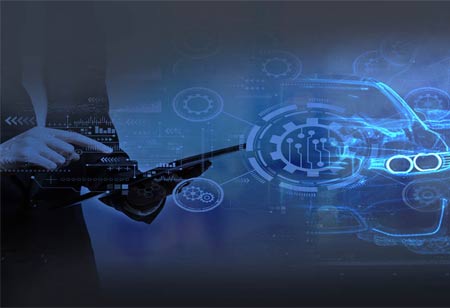THANK YOU FOR SUBSCRIBING
THANK YOU FOR SUBSCRIBING
Be first to read the latest tech news, Industry Leader's Insights, and CIO interviews of medium and large enterprises exclusively from Auto Tech Outlook

By
Auto Tech Outlook | Thursday, October 05, 2023
Stay ahead of the industry with exclusive feature stories on the top companies, expert insights and the latest news delivered straight to your inbox. Subscribe today.
Choosing between active and passive sensors hinges on specific requirements, with active sensors emitting energy for high accuracy but higher power consumption and detectability, while passive sensors privately detect natural radiation with lower power usage but reduced accuracy.
FREMONT, CA: Sensor technology plays a pivotal role enabling to gather critical data for a wide range of applications, from environmental monitoring to autonomous vehicles and healthcare. Active and passive sensors are two fundamental categories of sensor technology, each with its unique capabilities and applications. In recent years, there have been significant advancements in both active and passive sensor technologies, leading to improved accuracy, efficiency, and expanded possibilities for data collection.
Active Sensor Technology
Active sensors emit energy, such as light or sound waves, and measure the reflected or transmitted signals to gather information about their surroundings. Recent developments in active sensor technology have revolutionised various industries:
LiDAR Advancements: Light Detection and Ranging (LiDAR) technology has seen remarkable advancements, particularly in the field of autonomous vehicles. These sensors now offer higher resolution and longer detection ranges, enabling safer and more precise navigation. Solid-state LiDAR, which eliminates moving parts, has emerged as a cost-effective alternative, making it more accessible for mass-market adoption.
Advanced Radar Systems: Radar technology, a staple in aviation and weather forecasting, has evolved with increased sensitivity and reduced size. Synthetic Aperture Radar (SAR) systems, used in satellite imaging, now provide higher-resolution imagery and improved data accuracy for applications like environmental monitoring and disaster management.
Quantum Sensing: Quantum technology has begun making its mark in the sensor domain. Quantum sensors, particularly quantum gravimeters and atomic clocks, offer unprecedented precision in measuring gravity and time, respectively. These advancements have implications for navigation, geology, and even the detection of underground resources.
Passive Sensor Technology
Passive sensors, on the other hand, detect and record natural emissions or reflections of energy without actively emitting any signals. Developments in passive sensor technology have opened up new opportunities in various fields:
Hyperspectral Imaging: Hyperspectral sensors capture images across hundreds of narrow, contiguous spectral bands. This technology has found applications in agriculture, environmental monitoring, and mineral exploration, providing valuable insights into material composition and vegetation health.
Infrared Sensing: Infrared sensors have evolved with improved sensitivity and resolution, allowing for enhanced thermal imaging and night vision capabilities. These advancements benefit industries such as security, firefighting, and medical diagnostics.
IoT Integration: The Internet of Things (IoT) has driven the integration of passive sensors into everyday devices and systems. Smart homes, for example, now incorporate passive sensors for temperature, humidity, and occupancy, enabling more efficient energy management and home automation.
Biosensors: The healthcare sector has seen notable progress in passive biosensors, which can detect biomarkers and pathogens with high accuracy. These sensors are crucial in early disease diagnosis, ensuring better patient care.
The continuous evolution of active and passive sensor technologies is transforming how we collect and utilise data across various industries. Technology advancements in sensor technology are improving precision, reliability, and accessibility for autonomous vehicles, environmental monitoring, and healthcare.
 Copyright © 2025 AutoTech Outlook. All Rights Reserved | Privacy Policy | Subscribe | Sitemap | About us | Feedback Policy | Editorial Policy
Copyright © 2025 AutoTech Outlook. All Rights Reserved | Privacy Policy | Subscribe | Sitemap | About us | Feedback Policy | Editorial Policy 



